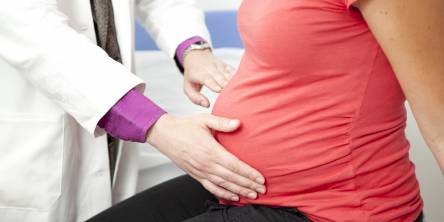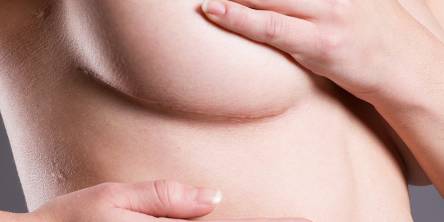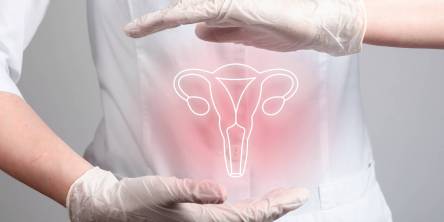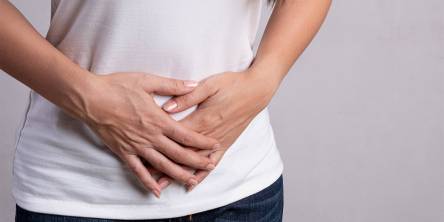Asherman’s Syndrome - Symptoms, Diagnosis, Prevention & Treatment
Asherman‘s syndrome is a rare condition, where scar tissue forms in the uterine cavity. This condition usually occurs in women who have had uterine surgery. There are also severe pelvic infections that may lead to Asherman’s syndrome, even if not related to surgery. Infections with tuberculosis or schistosomiasis may also lead to intrauterine adhesions, although in rare cases.
Procedures that can lead to the condition (surgical):
- D&C (dilation and curettage) miscarriage, incomplete or missed
- D&C for retained placenta
- Suction method D&C
- Hysteroscopy myomectomy
- Cesarean section
- Uterine artery embolization
- Vacuum procedure performed for abortion
- IUD (intrauterine device birth control)
Non-surgical risk factor procedures:
- Uterine packing with gauze to prevent postpartum hemorrhage
- Douching with a caustic chemical to induce abortion
- Endometrial tuberculosis
- Pelvic irradiation for cancer treatment
Infections with tuberculosis or schistosomiasis may also lead to intrauterine adhesions, although in rare cases.
Symptoms of Asherman’s syndrome
Some of the symptoms of the adhesions include lack of menstrual periods, miscarriages, and infertility. These symptoms can occur due to different kinds of conditions but indicate Asherman’s syndrome when they occur suddenly after a uterine surgery.
Women who have Asherman’s syndrome may notice menstrual periods being lighter than usual or having no periods at all. At the same time, there are women who have the condition and still have normal periods. Women may experience severe pain at the time of the menstrual period. This pain can be an indicator of adhesions near the cervix obstructing the normal menstrual flow.
Diagnosis
Different tests may be used to diagnose Asherman’s syndrome, such as hysteroscopy, hysterosonogram, transvaginal ultrasound examination or blood tests to diagnose tuberculosis or schistosomiasis. A pelvic exam usually doesn’t reveal Asherman’s syndrome.
Prevention
The best solution, in ideal cases, is to prevent the condition from occurring, at all. There are ways of preventing adhesions and scar tissue. In the case that you need to undergo a miscarriage, consider a natural one rather than a D&C miscarriage. Most women’s bodies are capable of miscarrying the natural way. D&C is a risk factor that may lead to Asherman’s syndrome and should therefore only be performed when necessary. There is a drug called Misoprostol, which is used for missed or incomplete miscarriage, or retained placenta after childbirth, and is believed to lower the risk of Asherman’s syndrome from forming.
There are systemic enzymes that help the body to break-down and prevent scar tissue formation. If you need to undergo a D&C procedure, think about having a systemic enzyme blend on hand for post-procedure healing. Using this therapy after bleeding has stopped, may help to prevent scar tissue from forming and may help prevent Asherman’s syndrome.
How therapy with systemic enzymes works:
- With the own immune defense system of the body to moderate inflammatory response.
- By supporting the cleansing of the tissues and improving circulation.
- By breaking down and removing a protein called fibrin that leads to prolonged inflammation and scar tissue/adhesion formation.
- By breaking down the proteins that cause inflammation in the blood, leading to their removal via the lymphatic and circulatory system.
- They reduce the inflammation, enhance proper blood formation, increases proper circulation while reducing pain.
It is recommended to start with the enzyme therapy right after a D&C procedure and is most effective when used for a period of two months. The therapy is suggested to be more effective if started with right after the procedure. It is recommended to take these blends on an empty stomach 45 minutes to 1 hour, prior to eating, or 1-2 hours after consuming a meal. Drinking a lot of water is necessary and it is best to take smaller dosages throughout the day rather than just one. The enzyme blends should not be used when experiencing heavy bleeding or two weeks prior to any kind of surgery.
There are some natural remedies that are believed to help reduce adhesions, such as the herb Shatavari (Asparagus racemosus). It seems to increase the phagocytic activity of the macrophages, which reduces the adhesions in the abdomen specifically.
Treatment options
Treatment of Asherman’s syndrome is done via hysteroscopy, in some cases assisted by laparoscopy. Adhesions usually have the tendency to reform, especially if these are severe cases of the condition. Just as there are methods to prevent the syndrome from occurring, there are methods to prevent re-scarring after surgery for Asherman´s Syndrome. Doctors recommend using estrogen supplementation, as they help to stimulate the healing process.
Others recommend a weekly hysteroscopy after the surgery to cut away any newly formed adhesions. Until now, there is no study that confirms which method of treatment is most likely to have a successful outcome. A successful outcome of treatment would be one where the uterus/cervix remains scar-free and fertility is restored.
Fertility consequences
The Asherman’s Syndrome can have a negative influence in the reproductive system, causing placenta accreta, infertility, recurrent miscarriage, intrauterine growth restriction, and others. The lack of menstrual periods is another concern. In some cases it occurs due to hormonal abnormalities, but in most cases it is caused by either complete destruction of the uterine lining or by obstruction of the cervix or lower portion of the uterus; therefore, menses are either retained in the uterus (leading to pelvic pain) or flow into the abdominal cavity leading to endometriosis.
Another condition that may occur due to Asherman’s Syndrome is uterine cancer, either before or after menopause. This is one of the reasons why a pelvic ultrasound should be conducted annually.
Similar Articles
Uterine fibroids are benign tumors that develop in the uterine muscle tissue. According to the US Office on Women's Health (OWH), fibroids can grow as a single tumor or as a cluster in the uterus, and they can be as small as an apple seed or as large as a grapefruit.
Your pregnancy test came back positive, and nothing, not even early pregnancy symptoms like morning sickness or exhaustion, can dampen your spirits. However, it is natural to worry about what to do when you discover you are pregnant.
A breast lift, like any other operation, involves skin incisions. Scarring occurs when your skin generates new tissues and mends the wound after an incision. There are, however, measures to reduce scarring before, during, and after a breast lift.
The cervix's proper functioning is crucial to a woman's reproductive health and fertility. However, most women do not know anything or have a limited understanding of it. As a result, there are numerous misconceptions surrounding cervical health.
Do many nighttime wake-up calls or interruptions to your daytime activities result from frequent bathroom visits? Six to seven trips to the bathroom in a 24-hour period is normal for most people. However, urinating more frequently could be a symptom of a serious problem.
The cervix is the lower part of the womb (uterus), where the fetus develops during pregnancy. A tiny hole in the cervix widens during birthing. It also lets menstrual blood exit her body.
Shatavari is a very renowned ayurvedic herb containing plenty of health benefits. It is also known as the universal rasayan. The word shatavari refers to a woman with a hundred husbands signifying the traditional use of this herb to boost the reproductive system of the body.
Despite the fact that around half of the world's population experiences, will experience, or has experienced menstruation, misunderstandings regarding this biological process remain.
Throughout your life, you may anticipate getting your period roughly 450 times. Even if you've gotten the hang of your cycle, there's a good possibility that some menstruation mysteries remain unanswered









